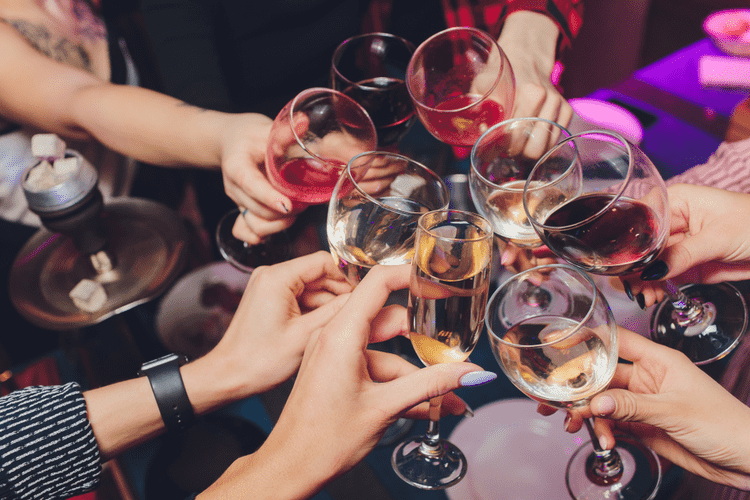However, these guidelines also state that SSRIs are preferred in comorbid AnxD and AUD treatment due to their low abuse potential, rare interactions and low overdose risk. There was also a suggestion that panic-crisis patients with an alcohol consumption history or AnxD family history could be recommended for an early start of AnxD treatment without waiting for abstinence (78). About 20 percent of people with social anxiety disorder also suffer from alcohol dependence. The researchers suggest that social anxiety and social motivation put students at greater risk from pregaming and recommend the exploration of mental health and drinking motivations as targets for intervention in heavy drinking populations. This review broadens the psychiatric perspective on the association between diagnosable alcohol and anxiety disorders to include the psychological/learning and neuroscientific disciplines.
These symptoms often go along with the low energy, headaches, and nausea experienced with a typical hangover. Those people who drink too much alcohol carry a heavier burden of anxiety and depression compared to those who don’t drink at all, or who drink smaller amounts of alcohol. This negatively reinforcing pattern can cause a person to feel overwhelmed, sometimes leading to a downward spiral both at work and at home, does alcohol cause panic attacks making it more difficult than ever to cut down or stop drinking alcohol. Having an alcoholic drink while you are taking medications to treat prostate conditions can cause dizziness, lightheadedness, and fainting. Mixing these medications with alcohol intensifies the side effects and increases the risk of a fatal overdose. Mild liver inflammation can occur in about 2% of people who take statins for a long time.
Don’t start and stop taking an antidepressant so that you can drink alcohol.
While this effect was observed only 6 hours after treatment in ND rats, it was long lasting in PD rats (at least 30 hours after injection). Furthermore, the results indicated that memantine did not modify the break-point for ethanol, suggesting that memantine acts by potentiating the pharmacological effect of ethanol but not by reducing the motivation for ethanol. Memantine was also ineffective in reducing relapse after protracted abstinence and may be used as a replacement therapy drug, but not as relapse-preventing drug (Alaux-Cantin et al., 2015). Research shows that alcohol use disorders (AUDs) and anxiety disorders often co-occur, with each exacerbating the other.
- From the psychological perspective, behavioral research demonstrates that drinking to cope with negative affect is a potent marker for current and future problems with alcohol.
- ABT-436 treatment reduced serum cortisol levels, however, no pharmacokinetic or pharmacodynamic interactions between ABT-436 and alcohol have been reported (Katz et al., 2016).
- Venlafaxine works on both serotoninergic and adrenergic systems, and reduces the cataplexy (a form of muscle weakness) episodes in patients with the sleep disorder narcolepsy (Grothe et al., 2004).
Recommendations for the use of psychopharmacological treatment in patients with comorbid AnxDs and AUDs. Posttraumatic stress disorder (PTSD) and SUD frequently co-occur, and their combination can increase poor health outcomes as well as mortality. The shared neurobiological features of these two illnesses include amygdalar hyperactivity with hippocampal, medial prefrontal, and anterior cingulate cortex dysfunction (100–102).
Signs of Teen Drug Use
It was difficult to interpret the findings reported by the studies included in this review. Many participants (43.1% altogether) dropped out of the studies before treatment ended. In addition, outcomes that were reported were either not precise, or appeared to be based on the selective reporting of measures that showed an effect of medication.

Seventeen out of the 26 patients received gabapentin (1200 mg orally for 3 days, followed by 900, 600, and 300 mg for 1 day each) and nine of them received chlordiazepoxide (100 mg orally for 3 days, followed by 75, 50, and 25 mg for 1 day each). Despite the limitation of the small sample size, this study showing a reduction in sleepiness and less alcohol craving warrants a replicate study with a larger sample group (Stock et al., 2013). A recent clinical study lasting for 12 weeks was conducted between 2004 and 2010 at a single-site, outpatient clinical research facility adjoining a general medical hospital. Gabapentin (particularly the 1800-mg dosage) was used to evaluate gabapentin as a pharmacological treatment option for alcohol dependence in primary care.
Development of Comorbid Anxiety and AUDs
Therefore, as a matter of course clinicians carefully should appraise this risk when weighing the potential costs and benefits of this CBT component for people with comorbid anxiety and AUDs. Such alterations can allow therapists to calibrate the dose of exposure that optimizes efficacy for extinction of the target fear response while minimizing the risk for relapse to drinking. This is good news, because most people with anxiety disorders do not report drinking to cope with their symptoms, but it also raises questions. For example, why do some people with anxiety problems drink to cope and others do not?

Treatment with quetiapine progressively lowered the occurrence of akathisia in alcohol dependent patients with no symptoms of depression, and over time in heavy drinkers who had clinically significant symptoms of depression (Kurlawala & Vatsalya, 2016). Several preliminary open-label and retrospective studies reported that quetiapine reduced alcohol intake in alcohol-dependent patients (Monnelly et al., 2004; Martinotti et al., 2008). In contrast, Kampman et al, reported that patients characterized by the late age onset of drinking problem and low severity of alcohol dependence did not benefit from quetiapine (Kampman et al., 2007).
Anxiety Medications and Alcohol Interactions
After a thorough manual selection process, the total was reduced to 21, having discarded publications that did not fulfill the RCT criteria or did not cover AnxD and AUD. Sign up for free and stay up to date on research advancements, health tips, current health topics, and expertise on managing health. Alcohol is a natural disinhibitor — meaning it can cause you to make choices you may not make while sober. This is why some people can wake up feeling embarrassed about things they said or did.